News
MCA building works
Nov 21st
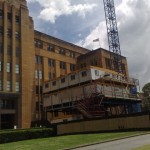 I took this picture at the Museum of Contemporary art this week. It shows some of the work that is going on at the site. The $50 million project will extend the MCA and give it a new entrance, cutting edge education centre, sculpture terrace, cafe and more.
I took this picture at the Museum of Contemporary art this week. It shows some of the work that is going on at the site. The $50 million project will extend the MCA and give it a new entrance, cutting edge education centre, sculpture terrace, cafe and more.
Elizabeth Fortescue, November 21, 2010
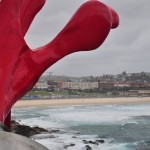
Sculpture by the Sea, 2010
Nov 6th
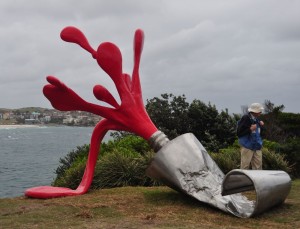 If you haven’t already been to Sculpture by the Sea this year, go now. It closes on November 14. I wandered along the dramatic, brooding coastline on a recent rainy day and took these pictures of a small selection of the 108 works of art on view. The rain started pelting down before I could do the entire walk, so I had to abandon ship. I’ll try to go again and take some more images of the Tamarama end. Hover your mouse over each picture to get the artist’s name and title of the work. David Handley, the founding director of Sculpture by the Sea, told me this year that it costs the contributing artists an average of $15,000 each to be part of the event. This amount is made up of materials, construction, transportation and many other on-costs. So a huge thank you to all of the artists. Of course, the sculptures are for sale.
If you haven’t already been to Sculpture by the Sea this year, go now. It closes on November 14. I wandered along the dramatic, brooding coastline on a recent rainy day and took these pictures of a small selection of the 108 works of art on view. The rain started pelting down before I could do the entire walk, so I had to abandon ship. I’ll try to go again and take some more images of the Tamarama end. Hover your mouse over each picture to get the artist’s name and title of the work. David Handley, the founding director of Sculpture by the Sea, told me this year that it costs the contributing artists an average of $15,000 each to be part of the event. This amount is made up of materials, construction, transportation and many other on-costs. So a huge thank you to all of the artists. Of course, the sculptures are for sale.
Elizabeth Fortescue, November 6, 2010
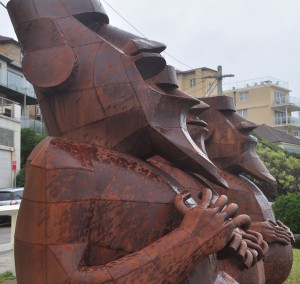
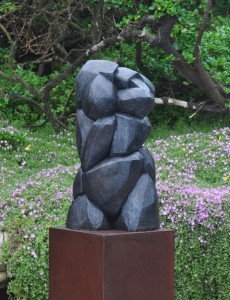
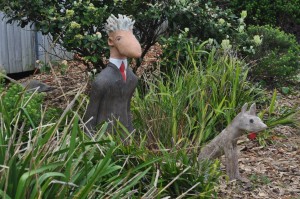
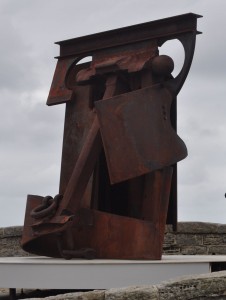
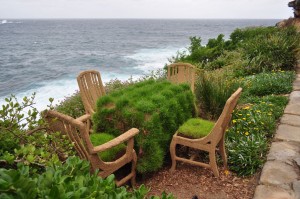
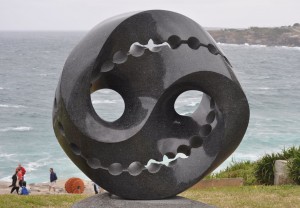
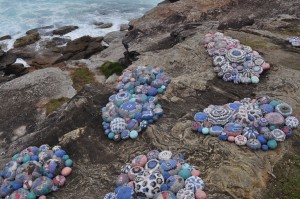
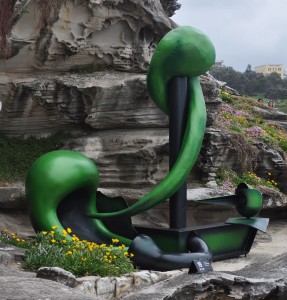
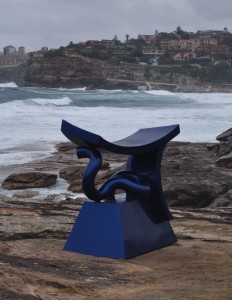
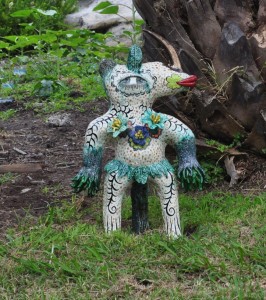
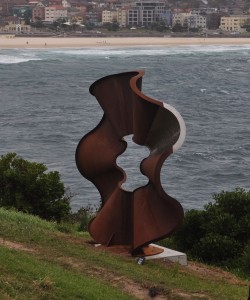
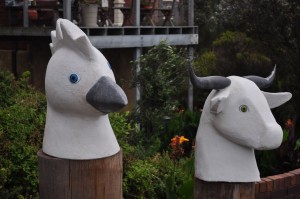
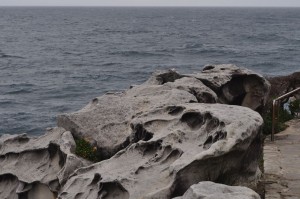
Euraba paper artists win Parliament of NSW Aboriginal Art Prize 2010
Oct 22nd
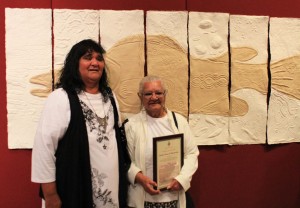 The Euraba Artists and Papermakers of the northern NSW town of Boggabilla have taken out the 2010 Parliament of NSW Aboriginal Art Prize, awarded to them at Parliament House this week.
The Euraba Artists and Papermakers of the northern NSW town of Boggabilla have taken out the 2010 Parliament of NSW Aboriginal Art Prize, awarded to them at Parliament House this week.
This picture shows representatives of the Euraba collective with their winning artwork, titled Gaduu – Murray Cod. The work is in mixed media using plant fibres and rag paper.
You can catch the exhibition of prize finalists at Parliament House until Thursday October 28, 2010, after which it will be touring NSW regional galleries. The prize is organised in collaboration with Campbelltown Arts Centre.
Elizabeth Fortescue, October 22, 2010
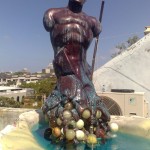
Sneak preview: Studio pictures of Bjorn Godwin’s work for Sculpture by the Sea, Bondi, opening October 28
Oct 18th
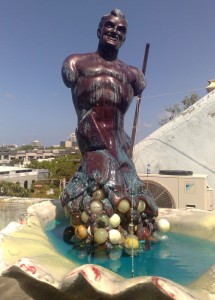 Here’s a sneak preview of Bjorn Godwin’s sculpture to be exhibited in Sculpture by the Sea from October 28, in Sydney. I photographed it last week when I interviewed Godwin for my story in today’s Daily Telegraph.
Here’s a sneak preview of Bjorn Godwin’s sculpture to be exhibited in Sculpture by the Sea from October 28, in Sydney. I photographed it last week when I interviewed Godwin for my story in today’s Daily Telegraph.
Yep, it’s an adaptation of Chesty Bond, the logo that Bonds used for many years to advertise its singlets. The model for Chesty was Max Whitehead, who died in March this year. Max had been a wrestling champ and surf lifesaver, not to mention the first caption of the Manly Sea Eagles rugby league team. Believe it or not, Max was also a chicken-sexer in the sporting off-seasons.
Godwin’s sculpture is titled Golden Boy (for the convenience of passers-by). The title makes reference to the undergraduate antics of the editorial team of Oz magazine back in the 1960s when they posed for a famous photograph which appeared in Oz and landed them in court on obscenity charges. In the picture, the boys appeared to be relieving their bladders into the Tom Bass P&O Wall Fountain. The fountain is let into the side of an office block in Sydney’s CBD.
Golden Boy, according to Godwin, is also commenting on the Australian predilection for nationalistic monuments. Like many of these monuments, Golden Boy will be surrounded by a white-painted chain fence.
There is a clear art-historical reference in Golden Boy, where Chesty Bond emerges from his oyster shell in the manner of Venus emerging from her shell in Botticelli’s famous work.
I was taken with Godwin’s studio on the rooftop of a tiny building in Chippendale, near Broadway. It was reminiscent of Le Corbusier’s Notre Dame du Haut, which I have only ever seen in my old school art book. There was the same curved roofline and tiny square windows. You can see them in my pictures. Elizabeth Fortescue, October 18, 2010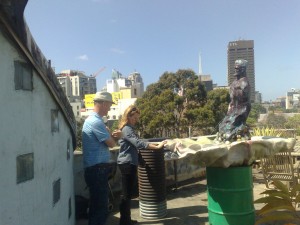
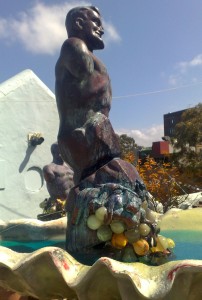
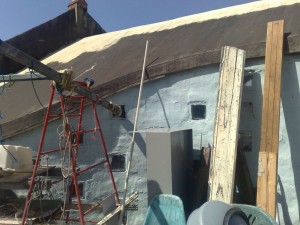
Opening of the new Indigenous Galleries, National Gallery of Australia
Oct 2nd
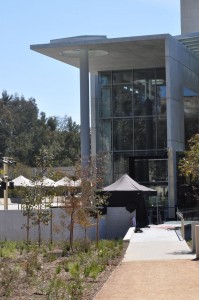 On Thursday I attended the press preview of Stage One of the redevelopment of the National Gallery of Australia, in Canberra. These are the photographs I took on the day.
On Thursday I attended the press preview of Stage One of the redevelopment of the National Gallery of Australia, in Canberra. These are the photographs I took on the day.
The first picture (left) depicts the new front entrance to the gallery. You pass through two sets of sliding glass doors and immediately find yourself inside a vast foyer, filled with light (below).
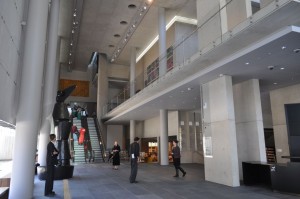
The gallery’s famous Aboriginal Memorial is immediately to your left in a kind of circular well in which it receives abundant natural light and is shown to great advantage. Margaret Olley told me on the day that she had never seen the memorial (below left) “look so spiritual”. The new shop (below right) and cloak room are also in the foyer.
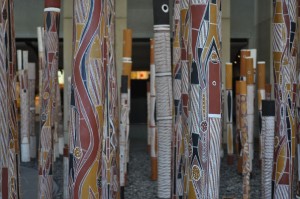
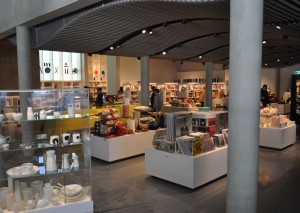
When you are standing in the new foyer, you will see a set of escalators right in front of you. Take the escalator up, and you are in the new indigenous galleries.
I think you will be able to see from the following photographs that the new galleries are a wonderful achievement. Most of them are lit with natural light, while those which contain drawings and other fragile materials have a special feature – they are lit artificially, but the lights are triggered only when someone enters the room. From a conservation and preservation point of view, this is an innovative and impressive idea.
National Gallery director Ron Radford gave a short speech in the foyer, welcoming particularly the 40 indigenous artists who had travelled from all over the country to be at the ceremony.
We went up to the new galleries, where artist Gali Yalkayirriwuy Gurruwirri performed a ceremonial dance (below left and right).
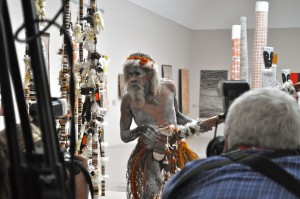
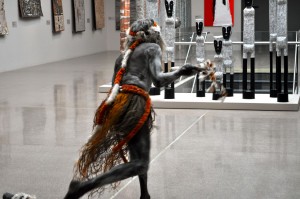
Among those watching the performance was the Maningrida bark master, John Mawurndjul (below).
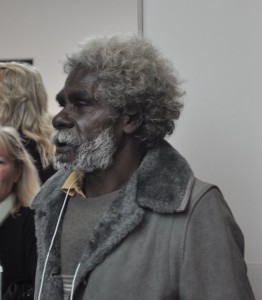
Mawurndjul and fellow Maningrida artist Owen Yalandja (below, with one of his works) were to return to their home the day after the opening, to attend an important men’s ceremony.
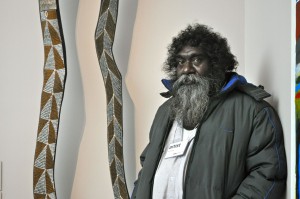
Here are some more pictures, showing the inside of the new indigenous galleries.
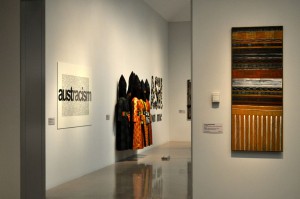
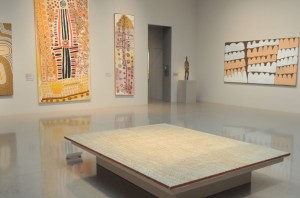
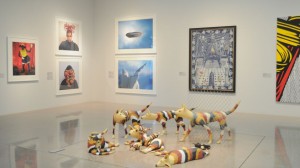
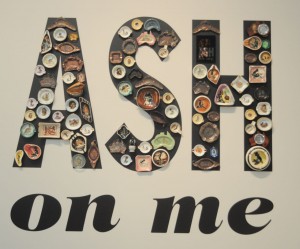
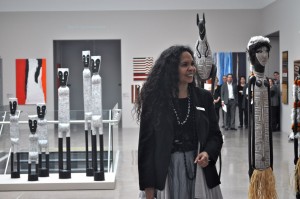 Francesca Cubillo (left), senior curator of Aboriginal and Torres Strait Islander art at the National Gallery, warmly thanked the artists for attending.
Francesca Cubillo (left), senior curator of Aboriginal and Torres Strait Islander art at the National Gallery, warmly thanked the artists for attending.
And finally, on the way out of the building, I met Thanakupi, the artist from Weipa, and spoke to her about her sculpture which was commissioned for the extensions to the building. Titled Eran, meaning “river”, the work depicts animals in the creation stories of the tribes along Weipa’s two rivers – the Evath eran and N’Gath eran. In English, these are the Mission River and the Hay River.
This is Thanakupi’s statement: “The sphere is circle. It is what I centred on in making pots. When looking at the world, it’s unity and the world. Taking that sphere and the designs, that is my art. Fire, earth, mother, unity. Designs on the ground, now on the bauxite, from clay to aluminium.”
Here is a photograph of Thanakupi’s work, Eran.
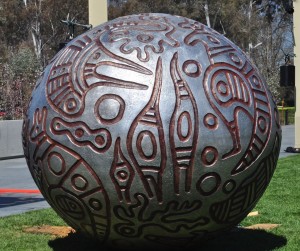
Elizabeth Fortescue, October 2, 2010
